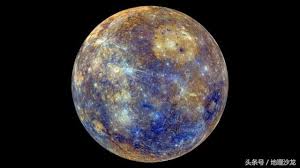







Mercury
the smallest and closest planet in the solar system
Mercury has no seasonal changes. There is only one solar day every two Mercury years. Therefore, one day on Mercury is equivalent to two years. Mercury's orbit is on the inner side of the earth, so it will not appear in the middle of the night. Although viewed from the earth, Mercury will be a very bright celestial body, but it is closer to the sun than Venus, so it is harder to see than Venus.
Venus
The second planet outward from the sun
Venus is one of the four terrestrial planets in the solar system. Because its size, mass, volume, and distance to the sun are similar to those of the earth, it is often called the twin brother of the earth.
Earth
The only known existence
71% of the earth's surface is covered by water. The main body includes the lithosphere, the earth envelope, the outer core of molten metal and the inner core of solid metal. The outside is surrounded by gas, called the atmosphere, and its main components are nitrogen, oxygen, carbon dioxide, and argon.
Mars
The forth planet in the solar system
The atmosphere of Mars is dominated by carbon dioxide, which is thin and cold. The visually orange-red color is caused by the widespread distribution of iron oxide on the surface. The surface of Mars is filled with dunes and gravels and there is no stable liquid water. The southern hemisphere of Mars is an ancient highland full of craters, and the northern hemisphere is a younger plain.
Jupiter
The biggest planet in the solar system
The mass of Jupiter is one-thousandth of the sun, but it is 2.5 times the total mass of other planets in the solar system. Jupiter and Saturn are gas giants. The main component is hydrogen, which may have a rocky core and heavy elements, but Jupiter does not have a solid surface that can be clearly defined. Due to its rapid rotation, Jupiter appears as an oblate.
Saturn
The only planet in the solar system with a planetary ring
Due to its low density, high-speed rotation and fluid variability, the shape of Saturn appears as an ellipsoid. Although the density of Saturn's core is much higher than that of water, Saturn is still the only planet in the solar system with a density lower than water due to its thicker atmosphere.
Uranus
The first planet discovered using a telescope
The main components of Uranus's atmosphere are hydrogen and helium. It is the coldest planet in the atmosphere of the solar system, with a minimum temperature of only −224°C. The outer atmosphere has a complex cloud structure, with water in the lowest cloud layer and methane forming the highest cloud layer. In comparison, the interior of Uranus is made of ice and rocks.
Neptune
The furthest planet in the solar system
The blue of Neptune is more vivid than that of Uranus in the same amount, so there should be other components that contribute to the obvious color of Neptune. Neptune has the strongest wind in the solar system, with measured wind speeds of up to 2,100 kilometers per hour. The temperature of Neptune's cloud top is -218 °C, because it is the farthest from the sun and, on average, is one of the coldest regions in the solar system.
Planet
do not emit light by themselves
The rotation direction of the planet is the same as the rotation direction of the star around it. The mass of the planet must be large enough and approximately spherical, so that it cannot undergo nuclear fusion reactions like stars. The five planets Mercury, Venus, Mars, Jupiter and Saturn visible to the naked eye in the solar system have been discovered in prehistoric times. After the invention of the telescope and the discovery of universal gravitation, mankind has discovered Uranus, Neptune, Pluto, and many asteroids.
